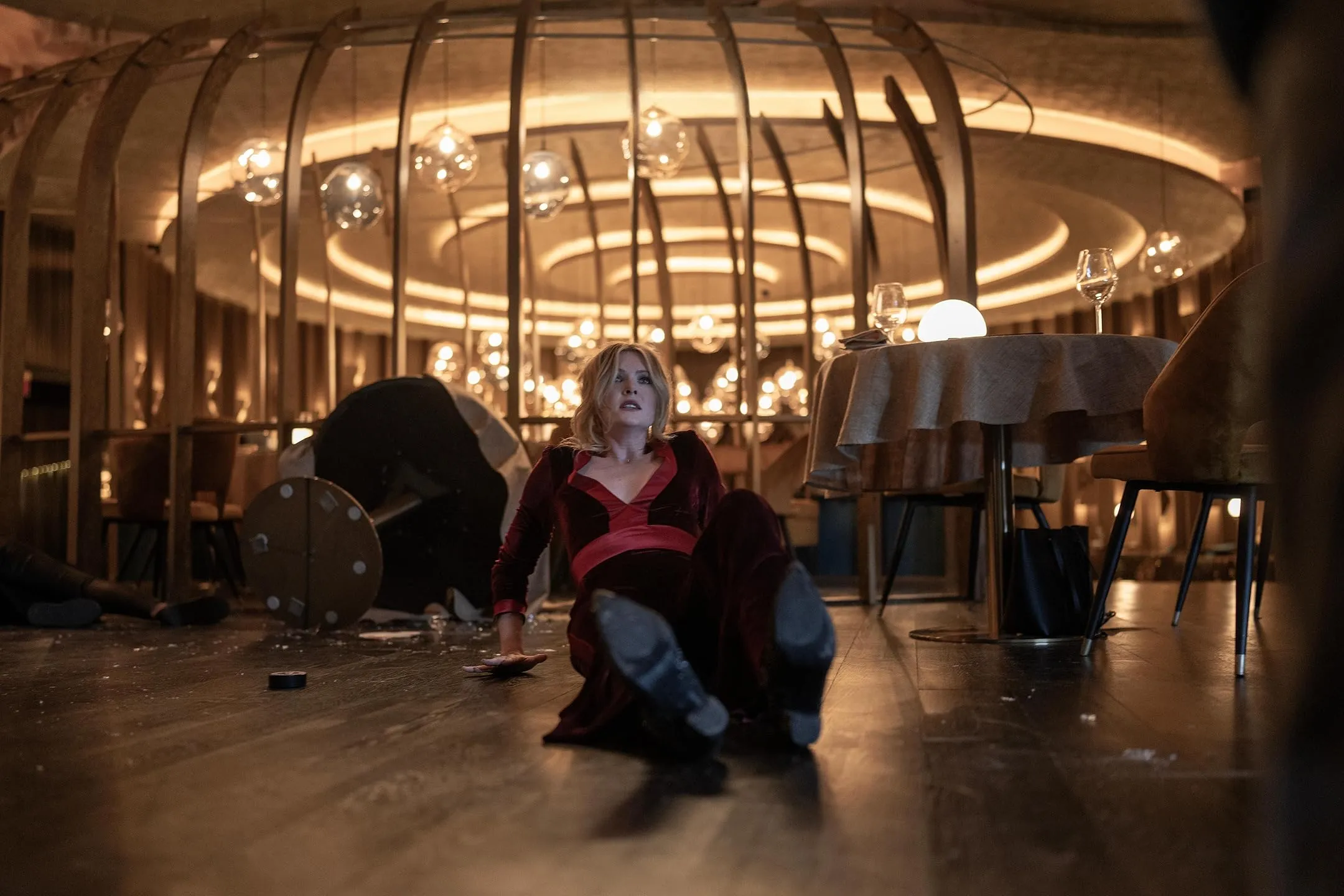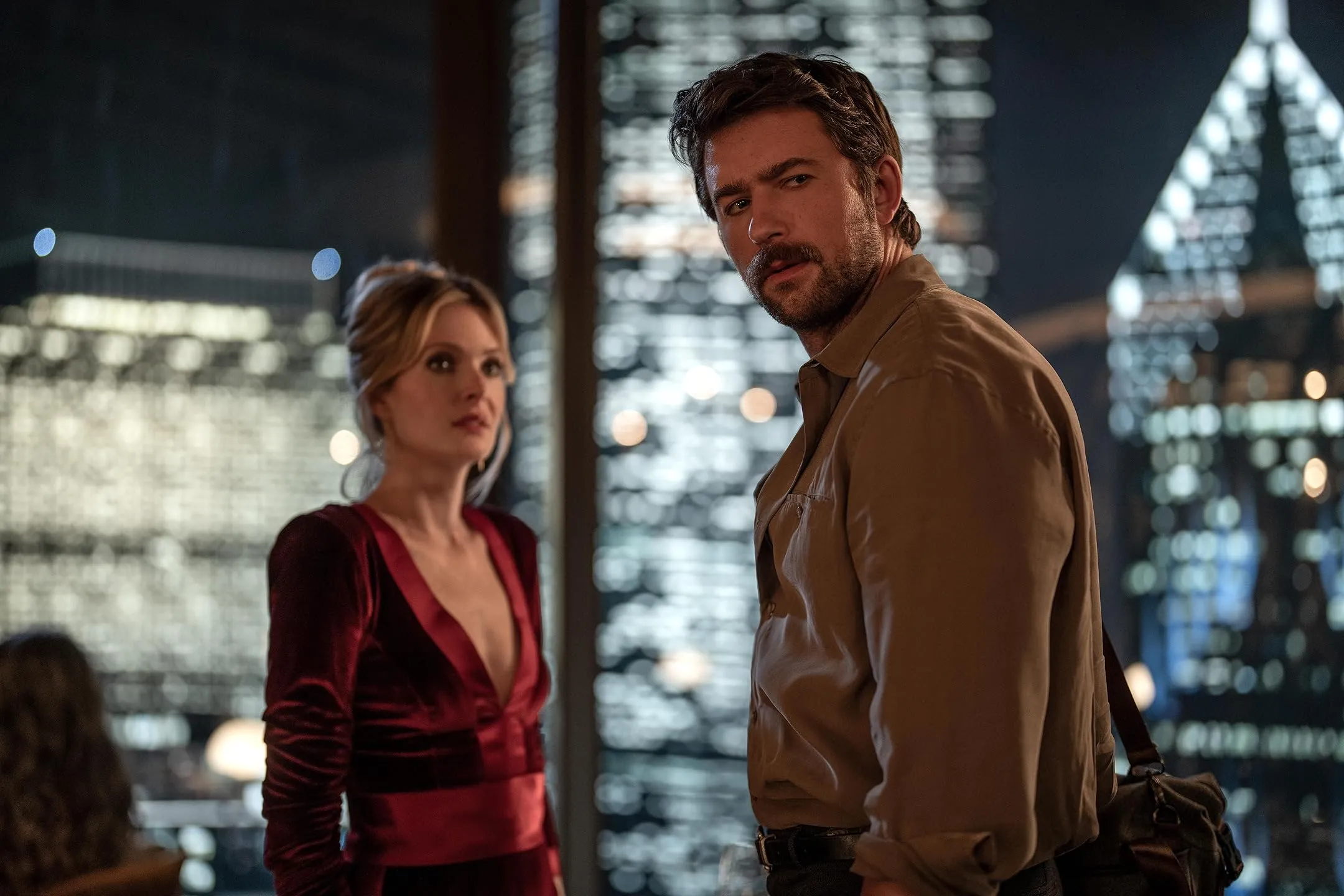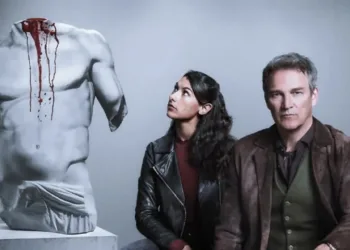“Drop” presents a narrative where modern devices spark tension that forces the protagonist to react under pressure. From the opening moments, the film places its main character in a scenario reminiscent of a strategic simulation where rapid decisions carry significant consequences. The experience is comparable to interactive systems in certain games, where choices feel weighty and shape the unfolding drama.
The film’s world is split between a stylish, elevated restaurant and a private residence steeped in uncertainty. The restaurant’s polished design and confined spaces create a sense of restriction, similar to a game level where every room intensifies the challenge.
In contrast, the home setting carries an ominous quality, as personal space is invaded by threats that demand split-second responses. Technology is not merely a background element; it acts as a key mechanism that propels the storyline forward, introducing unforeseen obstacles that require immediate tactical thinking.
Each location contributes to a well-crafted environment that keeps the audience alert. The careful design of these spaces, along with the film’s focus on cause-and-effect moments, invites viewers to engage with the narrative as if they were participants in a high-stakes interactive experience.
Plot Mechanics and Narrative Dynamics
“Drop” sets up a high-stakes scenario that mirrors the complexity of interactive storytelling in many modern role-playing experiences. The story centers on Violet, whose past hardships create a tension-filled backdrop as she steps into the uncertainty of a first date.
The narrative opens with a glimpse into her personal struggles—a moment that frames her cautious approach toward new relationships. This initial phase works like an introductory tutorial, familiarizing us with her inner conflicts and the weight of previous trauma.
Shortly into what should be a routine evening, an unexpected alert transforms the experience. A series of digital messages serve as the inciting incident, much like an unforeseen event in a strategy game that forces immediate recalibration of tactics.
The setting of the upscale restaurant amplifies the intensity; every glance and gesture acquires significance as Violet is forced to manage both the external pressures of her environment and the personal danger looming at home.
As the narrative builds, the progression mirrors well-designed game levels where each stage challenges the player to reassess their options. The moments of rising tension occur as Violet juggles subtle cues in her surroundings with the disruptive force of the digital drops.
Each decision she faces carries tangible consequences, drawing a parallel to game systems where risk and reward are balanced through a well-calibrated mechanism. Key turning points in the film arise when Violet must choose between self-preservation and unmasking the source behind the threats—a dilemma that heightens the sense of interactivity and choice.
The pacing mimics a well-timed sequence in a tactical adventure, where the momentum of the narrative accelerates at unpredictable intervals. The limited settings and small cast contribute to a tightly focused experience, ensuring that every choice and moment of suspense feels deliberate and impactful.
Character Dynamics and Performance Breakdown
Violet stands out as a figure molded by hardship. Her past, marked by domestic violence and loss, has prepared her to face danger under pressure. Her struggle to balance openness with the need for caution adds a layer of depth that holds attention with every glance and subtle gesture. Violet’s portrayal is solid, making each moment on screen feel charged with personal history and real stakes.
Henry enters with a smile that hints at hidden motives. His calm and composed presence creates an air of mystery, inviting viewers to question his role as events unfold. The interplay between him and Violet is carefully constructed, with their shared scenes building tension as their chemistry shifts with each decision made in the face of rising threat.
Toby, Violet’s son, plays a role that increases the risk tied to every choice made by the lead. His presence is a constant reminder of the high personal cost behind every action, giving emotional weight to the story.
Jen, as Violet’s sister, contributes warmth and reliability during testing moments, reinforcing the idea that family ties can provide a lifeline in dangerous situations. Minor figures, such as the eccentric waiter, add flashes of humor that counterbalance the tension, serving as distractions that momentarily ease the strain of the central conflict.
The actors deliver performances that are carefully tuned to support the narrative’s focus on decision-making and consequence. Each performance reinforces the idea that every personal choice carries weight.
The authenticity of these portrayals ensures that the stakes are clearly communicated to both casual viewers and those who appreciate a detailed look at character-driven narratives. This collective work on screen creates a network of relationships that continuously feeds the story’s drive, leaving an impression that lingers well after the scene fades.
Character Dynamics and Performance Analysis
Violet stands as a figure whose background of domestic strife and personal loss has clearly prepared her for challenges that require quick and decisive responses.
Her past is evident in every subtle expression, revealing the internal struggle between fragile vulnerability and the steely determination needed to protect those dear to her. The performance brings a sense of urgency to each scene, engaging the viewer with a realistic portrayal of fear mixed with unwavering resolve.
Henry enters the narrative with a smile that suggests hidden layers. His initial charm carries an undercurrent of uncertainty that grows as the plot unfolds.
Their shared screen moments present a dynamic interaction where trust is gradually tested, with every glance and word weighing on the unfolding crisis. The tension in their exchanges mirrors the weight of in-game decision points, where choices may alter the course of events in unexpected ways.
Toby, the young son, plays a critical role by serving as a constant reminder of the stakes involved. His presence injects an emotional charge into Violet’s decisions, emphasizing the real-world impact of every risk taken. Jen, as Violet’s supportive sibling, provides a grounding influence that reinforces the importance of familial bonds when facing adversity.
Secondary characters, such as the eccentric waiter, provide instances of light humor that briefly ease the intensity of the situation while adding extra layers to the unfolding drama. These moments serve a dual purpose: offering a break from the sustained tension and subtly contributing to the overall suspense through misdirection.
The performances across the cast connect deeply with the film’s narrative, drawing the viewer into a scenario where every decision carries a real consequence.
Each actor’s commitment creates a palpable environment, where the emotional stakes mirror the strategic decision-making found in interactive storytelling. The result is a series of character portrayals that maintain a solid connection between personal motivations and the high-pressure scenario they face.
Directorial Vision and Visual Craft
Christopher Landon commands the film like a designer orchestrating a challenging level where every action holds weight. His style treats each scene as a carefully arranged stage, where tension and brief flashes of humor shape the viewer’s experience.
Landon creates a framework that mirrors interactive narratives, where choices lead to sudden shifts in atmosphere and consequence, much like critical moments in role-playing adventures.
The camera acts as a guide through Violet’s world, closely following her movements as if the viewer were steering her decisions. Stark lighting and angled shots provide a visual language that builds an atmosphere of encroaching pressure.
Extreme close-ups capture fleeting expressions that transform small, personal reactions into moments of high drama. The fluid motion of the camera generates an immediacy akin to the responsiveness found in well-timed game mechanics, ensuring that every moment feels both intimate and significant.
The film’s settings function almost as additional characters. The upscale restaurant is constructed as a space where every detail contributes to the overall tension, similar to a meticulously crafted game environment that defines the challenges ahead.
Modern technology appears as an active force, sparking events that shift traditional storytelling into a more interactive format. Editing and pacing maintain a rapid rhythm reminiscent of quick combat sequences in indie titles, where each cut and sound cue prompts a reaction from the audience. The musical score punctuates these moments, raising the stakes much like an immersive soundtrack does in your favorite tactical quests.
Every visual decision—from lighting to set design—plays a distinct role in advancing the narrative. The careful construction of each scene encourages viewers to read between the lines, engaging them in a series of choices and reactions that mirror the experience of managing risk and reward in a complex, narrative-driven game.
Digital Echoes and Human Wounds
“Drop” places modern technology at the center of its narrative, using digital cues to spark tension and force critical decisions. The film sets technology up as both an indispensable resource and a lurking menace, where every digital message hints at peril.
This design is reminiscent of game mechanics where online interactions trigger sudden in-game challenges, raising questions about the reliability of digital communication. The feeling of being linked online yet isolated when danger strikes mirrors experiences common in interactive adventures, where social connections are strained by unexpected threats.
The protagonist’s history of hardship shapes her responses to these modern dangers. Violet’s past, marked by severe personal loss, fuels her instinct to protect her family, echoing survival modes found in well-crafted role-playing experiences. Her struggles to balance personal vulnerabilities with the need to take decisive action remind one of character progression systems that weigh emotional depth against tactical prowess.
The film uses the recurring digital messages as symbols—each drop represents a moment of impending peril and a test of resolve. Visual cues, such as stark lighting contrasts and confined spaces, serve as recurring motifs that heighten the impact of these narrative beats.
Social commentary arises naturally from these elements, critiquing a society increasingly dependent on technology while questioning the authenticity of its connections. Violet’s fight for agency in the face of digital threats stands as a pointed remark on modern personal empowerment, echoing themes present in many interactive stories where every choice carries a lasting consequence.
Narrative Mechanics & Suspense Techniques
The screenplay presents a tightly arranged story that keeps viewers on high alert. The plot unfolds in a limited space, and each moment seems carefully designed to spark unexpected reactions.
Sudden shifts in tone mimic the unexpected encounters found in interactive role-playing titles, where player decisions can change the course of the narrative in real time.
The placement of surprising twists and red herrings works like timed challenges in a game, forcing rapid reassessment of choices without overloading the experience.
The buildup of tension is methodical. Scenes move from a calm, everyday environment to instances of startling terror, much like the pacing of an action sequence in a well-crafted indie game.
Each twist lands with precision, leaving space for moments of silence that heighten the impact of subsequent shocks. The camera captures the protagonist’s perspective with swift angles and tight cuts, creating an immersive feel similar to navigating a complex level where every decision matters.
Sound plays a key role as well. Periods of quiet are interrupted by sudden bursts of noise that enhance the sense of urgency, much like sound cues in dynamic combat encounters.
There are also moments of humor that offer brief respite from the ongoing pressure, echoing the balance found in narrative-driven games where light moments punctuate high-stakes drama.
This blend of rapid narrative shifts, visual cues, and responsive sound design creates an engaging experience that keeps viewers aware of every choice’s weight and its cascading effects.
The Review
Drop
"Drop" delivers a taut thriller experience that fuses modern tech threats with classic suspense. The film challenges viewers with smart narrative twists, vivid visual cues, and emotionally charged performances. Every choice on screen feels weighty, and the design keeps tension steadily high while sprinkling in brief, refreshing humor. It offers a solid pick for fans of immersive, high-stakes narratives.
PROS
- Smart, engaging plot twists
- Immersive visual and sound design
CONS
- Limited character depth for some roles
- Predictable moments in later acts




















































